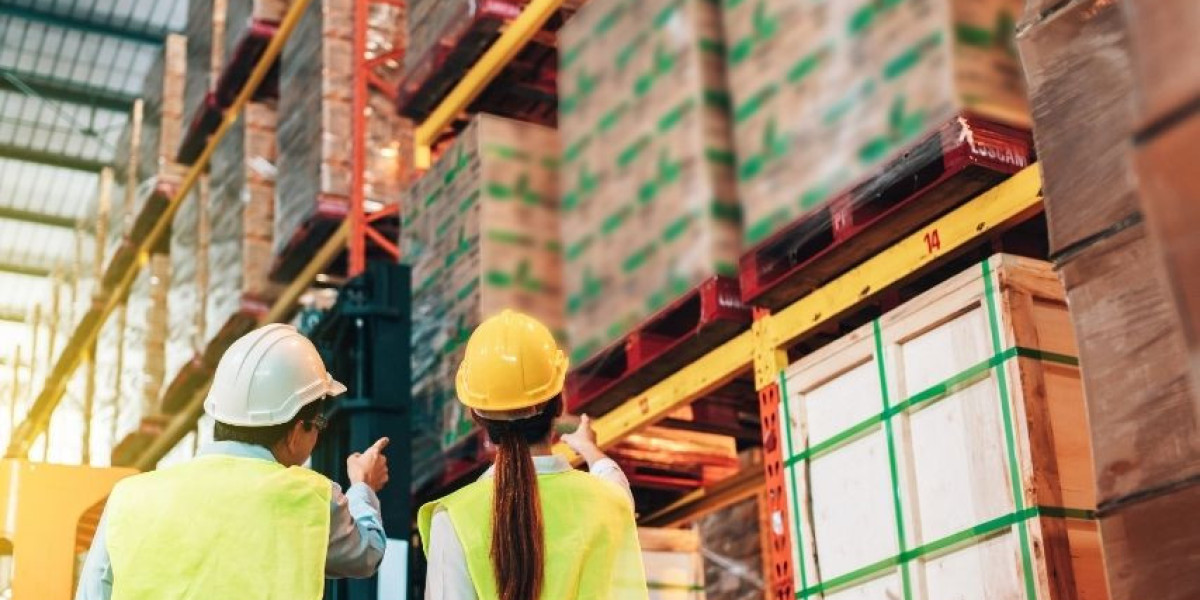Warehouse safety isn't just about compliance – it's the backbone of operational excellence in Malaysia's dynamic logistics sector. Are you confident your warehouse meets all HSE (Health, Safety, and Environment) requirements while maintaining peak efficiency?
The key to a successful warehouse operation lies in implementing robust safety protocols that protect both your workforce and your bottom line. In this detailed guide, we'll take you through the critical safety elements that every Malaysian warehouse must have.
Regulatory Framework for Malaysian Warehouse Safety
The regulatory landscape for warehouse safety in Malaysia is governed by comprehensive frameworks that prioritize worker protection and operational efficiency. These regulations form the backbone of safe warehouse operations across the country.
DOSH Standards and Compliance Requirements
The Department of Occupational Safety and Health (DOSH) serves as Malaysia's primary regulatory body overseeing workplace safety. The Occupational Safety and Health Act (OSHA) 1994 stands as the primary legislation that outlines fundamental safety requirements for warehouses.
Under the OSH Bill, warehouse operators must implement systematic approaches to identify, evaluate, and control workplace hazards. This includes regular safety audits, risk assessments, and the establishment of safety committees for facilities with more than 40 workers.
DOSH compliance requirements mandate that warehouses must:
- Conduct periodic safety inspections
- Maintain detailed accident records
- Provide adequate safety training to workers
- Install proper safety signage
- Ensure proper ventilation and lighting
- Implement emergency response procedures
The regulatory framework emphasizes the importance of preventive measures and proactive safety management. Warehouse operators must stay updated with the latest DOSH standards and ensure their facilities meet all prescribed safety requirements.
Non-compliance with these regulations can result in severe penalties, including fines and potential facility closure. Therefore, understanding and implementing these requirements is crucial for sustainable warehouse operations in Malaysia.
Essential Components of a Warehouse Safety Program
A well-structured warehouse safety program forms the foundation of a secure and efficient operation. It encompasses various critical elements that work together to create a comprehensive safety framework. Let's explore the essential components that make up an effective warehouse safety program.
Risk Assessment and Hazard Identification
The cornerstone of any robust warehouse safety program begins with thorough risk assessment and hazard identification. This systematic process involves evaluating potential risks across all operational areas and implementing appropriate safety protocols to address them.
A comprehensive risk assessment should:
- Identify potential hazards in different warehouse zones
- Evaluate the severity and likelihood of each risk
- Document existing safety procedures and their effectiveness
- Recommend improvements to current safety protocols
- Schedule regular reassessments to maintain relevance
When conducting hazard identification, focus on:
- Physical hazards (slips, trips, falls)
- Equipment-related risks (forklifts, pallet jacks)
- Storage and stacking dangers
- Material handling concerns
- Environmental factors (lighting, ventilation)
The safety procedure for risk assessment must be documented and regularly updated to reflect changing warehouse conditions. This ensures that the critical elements of warehouse safety remain current and effective.
To maintain an effective warehouse safety program, organizations should:
- Conduct monthly safety audits
- Review incident reports and near-misses
- Update safety protocols based on findings
- Train staff on new safety procedures
- Monitor compliance with established guidelines
Remember to involve warehouse staff in the risk assessment process, as they often have valuable insights into daily operational hazards. Their input can significantly enhance the effectiveness of your safety protocols and contribute to a more comprehensive safety framework.
Personal Protective Equipment Requirements
Personal protective equipment forms the first line of defense against workplace hazards in Malaysian warehouses. Implementing proper PPE protocols is crucial for safeguarding workers and maintaining operational efficiency.
PPE Selection and Maintenance
The selection of required PPE must align with specific job functions and potential hazards. Workers need high-visibility clothing to ensure they remain visible to forklift operators and other machinery operators. Safety shoes with steel toes protect against falling objects, while safety helmets guard against head injuries from overhead hazards.
Proper maintenance of safety equipment is equally important as its selection. Regular inspection of personal protective equipment helps identify wear and tear, ensuring optimal protection. Workers should:
- Check PPE before each use
- Clean and store equipment properly
- Report any damage immediately
- Replace worn-out items promptly
- Follow manufacturer guidelines for maintenance
Employers must provide appropriate training on PPE usage and ensure workers understand:
- How to properly wear and adjust equipment
- When specific PPE is required
- Limitations of protective gear
- Signs of equipment deterioration
- Proper storage methods
Emergency Response and Safety Protocols
Emergency Response Team Formation
Establishing a robust emergency response team is crucial for warehouse safety in Malaysia. This dedicated team serves as the first line of defense during critical situations, ensuring swift and coordinated actions to protect personnel and assets.
The team should include trained individuals from different departments, each assigned specific roles and responsibilities. Key positions typically include team leaders, first aid responders, evacuation coordinators, and fire safety officers. Regular training sessions help maintain their readiness and proficiency in handling various emergency scenarios.
An effective emergency action plan forms the backbone of the team's operations. This comprehensive document outlines response procedures for different types of emergencies, communication protocols, and evacuation routes. The plan should be regularly reviewed and updated to reflect any changes in warehouse operations or layout.
Fire safety remains a top priority, with the emergency response team working closely with the in-house fire brigade. Team members undergo specialized training in fire prevention, detection, and suppression techniques. They also conduct regular fire drills to ensure all warehouse staff are familiar with evacuation procedures.
First aid capabilities are another crucial aspect of the emergency response team. Members receive certified first aid training to handle workplace injuries and medical emergencies until professional help arrives. The team maintains well-stocked first aid stations throughout the warehouse and regularly checks supplies.
The emergency response team also plays a vital role in preventive measures, conducting regular safety inspections and identifying potential hazards before they escalate into emergencies. This proactive approach helps maintain a safer work environment and reduces the likelihood of serious incidents.
Safe Material Handling Practices
Proper material handling is crucial for maintaining a safe warehouse environment in Malaysia. Storage workers must understand and follow established protocols to prevent accidents and injuries during daily operations.
Equipment Operation Guidelines
When it comes to heavy lifting and cargo handling, using the right equipment is essential. Storage workers should always inspect equipment before use and follow these critical practices:
- Ensure forklifts and pallet jacks are properly maintained and certified
- Check load capacity limits before attempting any lift
- Use mechanical aids whenever possible to minimize manual handling
- Keep clear communication with spotters during unloading of cargo
- Maintain proper posture and technique during lot of heavy lifting tasks
For manual material handling, workers should:
- Assess the weight and size of items before lifting
- Use team lifting for bulky or heavy objects
- Keep loads close to the body while carrying
- Avoid twisting movements during lifting
- Take regular breaks to prevent fatigue
Proper training is vital for all storage workers involved in material handling. This includes:
- Understanding equipment operation procedures
- Recognizing potential hazards
- Learning correct lifting techniques
- Knowing emergency protocols
- Maintaining proper documentation
Modern Safety Technologies and Solutions
In the dawn of advanced technology, warehouse operations have undergone a significant transformation in terms of safety protocols and monitoring systems. Modern solutions are revolutionizing how we approach warehouse safety, making operations more efficient and secure than ever before.
Digital Safety Management Systems
Digital safety management systems represent a crucial advanced HSE solution that's reshaping warehouse safety protocols. These sophisticated platforms integrate various safety components into a unified system, enabling real-time monitoring and quick response to potential hazards.
The implementation of technological solutions has made it possible to track safety metrics, conduct digital inspections, and maintain comprehensive safety records with unprecedented accuracy. These systems can automatically alert supervisors about safety violations or equipment maintenance needs, ensuring proactive risk management.
For sustainable warehouse operations, these digital platforms offer:
- Real-time safety monitoring and reporting
- Automated compliance tracking
- Digital incident reporting and investigation tools
- Predictive maintenance scheduling
- Employee safety training management
Modern safety management systems also facilitate better communication between different warehouse zones and shifts, ensuring consistent safety standards across operations. They provide valuable data analytics that help identify patterns and potential safety concerns before they become serious issues.
Training and Certification Requirements
Safety Training Programs
Worker training forms the cornerstone of warehouse safety in Malaysia. A comprehensive understanding of warehouse safety protocols is essential for all personnel, from entry-level workers to supervisory staff. Regular training sessions ensure that employees stay updated with the latest safety practices and procedures.
Required certification plays a vital role in maintaining high safety standards. Workers must complete specific training modules covering various aspects of warehouse operations, including:
- Material handling equipment operation
- Emergency response procedures
- Hazardous materials management
- Fire safety protocols
- First aid and basic medical response
- Manual handling techniques
These training programs must align with Malaysian occupational safety regulations and best practice guidelines. The certification process typically involves both theoretical knowledge assessment and practical demonstrations of safety procedures.
To maintain operational efficiency, warehouse managers should:
- Schedule regular refresher courses
- Document all training activities
- Assess worker competency periodically
- Update training materials based on incident reports
- Maintain certification records
- Conduct mock emergency drills
Professional certification bodies in Malaysia offer specialized courses for different warehouse roles. These certifications ensure that workers possess the necessary skills and knowledge to perform their duties safely and efficiently.
Conclusion
Implementing robust warehouse safety measures in Malaysia isn't just about meeting DOSH compliance—it's about creating a sustainable, efficient operation where every worker returns home safely. By following the comprehensive HSE protocols outlined in this guide, from proper PPE implementation to advanced technological solutions, you're investing in both your workforce's well-being and your facility's operational excellence. Remember, warehouse safety is an ongoing journey that requires regular assessment, continuous training, and unwavering commitment to best practices. Whether you're managing a small storage facility or overseeing a large industrial warehouse, these safety protocols serve as your foundation for success. Start by implementing one safety measure at a time, focusing on critical areas like risk assessment, emergency response procedures, and worker training. Take action by conducting a thorough safety audit of your facility and developing a detailed implementation plan. Your commitment to warehouse safety will not only ensure DOSH compliance but also foster a culture of safety that drives sustainable growth and operational efficiency.





